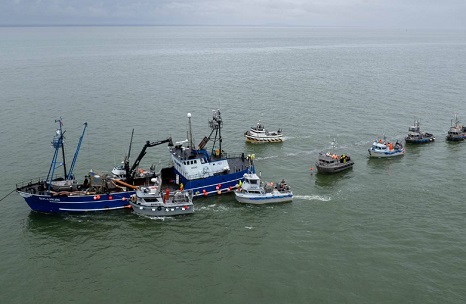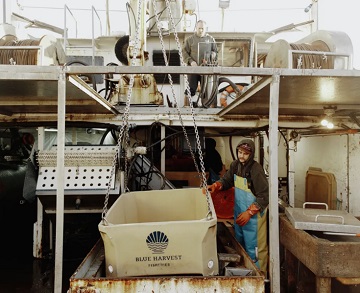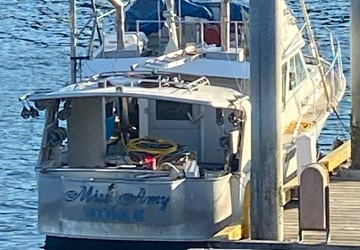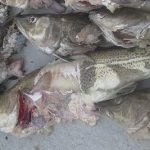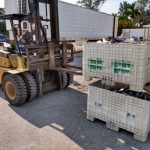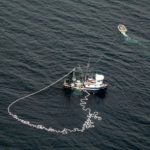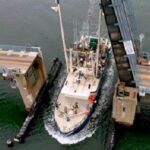Tag Archives: Alaska
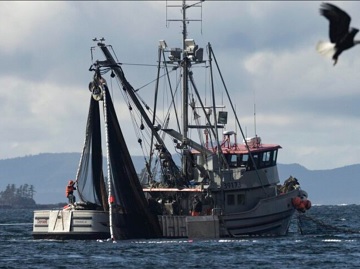
Alaska’s herring row
On a drizzly March afternoon in Sitka, Alaska, K’asheechtlaa “Louise” Brady hurries down a wooden ramp to the dock at Fisherman’s Quay, her gray-streaked hair spilling from the hood of her windbreaker. There, two small skiffs sit low in the water, heavy with 10-foot-long hemlock branches jeweled with yellow-white fish eggs. “Oh, they’re so beautiful!” “This is the taste of what it means to be Tlingit.” Jamie Ross stands on the deck of his seiner, F/V Anduril, next to a pile of dead herring, his shaggy white hair and mustache blowing in the wind. Ross, who’s from Homer, Alaska, has fished Sitka herring for 30 years. He’s one of the 47 permit holders, and one of the few who remember when herring fisheries lined the Alaska coast. Photos, >click to read< 13:29
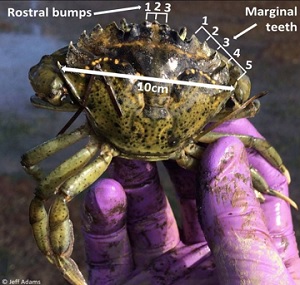
Invasive Green Crab Detected in Alaska for the First Time
The green crab is an invasive marine species spreading throughout the coastal waters of the United States. Efforts between NOAA Fisheries and Metlakatla Indian Community have been leading the way on monitoring to detect this species’ presence in Alaskan waters. The green crab has been found in U.S. waters since the 1800s, but this is the first confirmed presence in Alaska. They are a threat to native species and habitats. They are highly competitive predators that can decimate shellfish populations, outcompete native crabs, and reduce eelgrass and salt marsh habitats. They are a serious threat for Alaska’s tidal habitats. >click to read< 11:47

Fisherman John Paul Feller Jr. has passed away
John Paul Feller Jr. passed into the “happy hunting grounds” on Aug. 10 in Wrangell after a hard battle with cancer, his family wrote. “He will be greatly missed.” A celebration of life will be held at a later time. John was born on Dec. 29, 1948, to John Paul Feller Sr. and Carol Alice (James) Feller Brady in Wrangell. The oldest of five children, John was someone who everyone looked up to and was a friend to all, his family wrote. John started fishing with his dad at a young age and his love of fishing continued throughout his life. He went on to be a master net maker, seasoned commercial fisherman, and earned his associate degree in environmental sciences. He was a well-known skiff man in Southeast. >click to read< 11:55
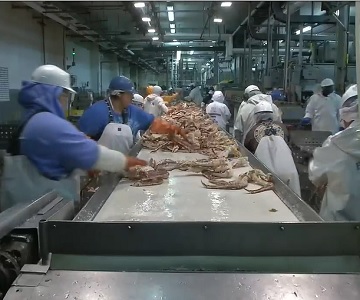
Marine biologist perplexed by snow crab disappearance
It’s a mystery perplexing marine biologists that could lead to a loss of one of Alaska’s most prized seafood exports — the Bering Sea snow crab. Many theories have been hypothesized as to what is causing the declining crab populations throughout Alaska, ranging all the way from migration of the crustaceans to predators taking them out. However, Erin Fedewa, a research fishery biologist with the National Oceanic and Atmospheric Administration, says the disappearance of this Alaskan staple could be a warning about how quickly a fishery can be wiped out in a new, shifting world. Video, >click to read< 12:39
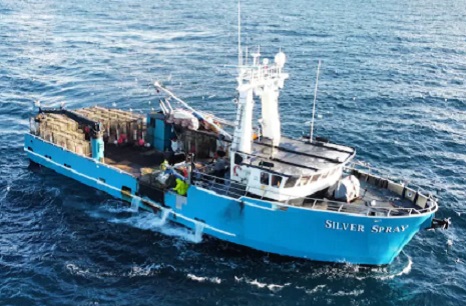
Alaska’s snow crabs have disappeared. Where they went is a mystery.
Gabriel Prout and his brothers Sterling and Ashlan were blindsided. Harvests of Alaskan king crab, the bigger, craggier species that was the star of the television show “Deadliest Catch”, have been on a slow decline for over a decade. But in 2018 and 2019, scientists had seemingly great news about Alaska’s snow crabs: Record numbers of juvenile crabs were zooming around the ocean bottom, suggesting a massive haul for subsequent fishing seasons. Prout, 32, and his brothers bought out their father’s partner, becoming part owners of the 116-foot F/V Silver Spray. They took out loans and bought $4 million in rights to harvest a huge number of crabs. It was a year that many young commercial fishers in the Bering Sea bought into the fishery, going from deckhands to owners. Everyone was convinced the 2021 snow crab season was going to be huge. And then they weren’t there. >click to read< 08:27
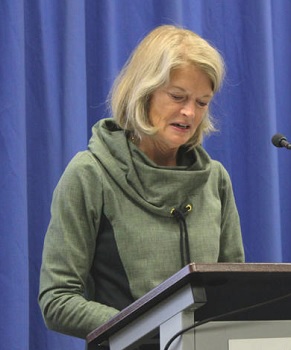
Bycatch stirs debate at fisheries roundtable
Hosted at Kenai Peninsula College by the Kenai River Sportfishing Association, the three-hour event brought together a who’s-who lineup of fisheries and policy experts from Alaska. That lineup included Alaska Department of Fish and Game Commissioner Doug Vincent-Lang, who said Bering Sea trawling is not responsible for Alaska’s declining chinook salmon runs. The Magnuson-Stevens Fishery Conservation and Management Act defines bycatch as fish harvested in a fishery that are not sold or kept for personal use. The phrase is sometimes used generally to refer to the capture of fish that are not being targeted by a specific fishery that are discarded. >click to read< 09:59
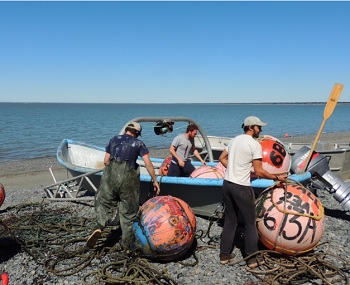
Set-netters’ case shot down, again, in court
And after the closure in 2019, set-netters represented by the Cook Inlet Fishermen’s Fund sued the state in hopes the court would order managers to rework that management plan and others. It alleged restrictions the state had placed on the commercial fishermen were unscientific and arbitrary and flew in the face of the Magnuson-Stevens Act. The Kenai court said because there was no federal management plan for Cook Inlet fisheries at that time, the state was not bound by those standards. And it said the state’s Board of Fisheries and Department of Fish and Game had the discretion to write and enforce their own rules. The Supreme Court doubled down on that opinion last week. >click to read< 12:04
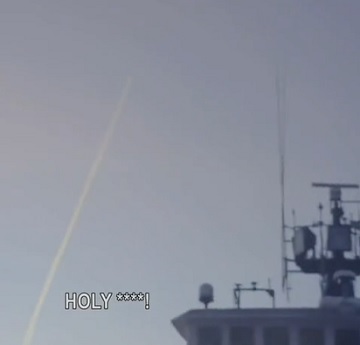
‘Deadliest Catch’ fleet witnesses unusual rocket launch: ‘Did Russia shoot a missile, dude?’
Captain Johnathon Hillstrand of the F/V Time Bandit was helping Captain Keith Colburn of the F/V Wizard fish the very edge of the U.S. fishing grounds. Prior to the alleged missile launch, the Wizard had a run-in with a Russian fishing vessel that was trawling in U.S. waters and endangering the Wizard’s fishing gear. The Time Bandit came to reinforce U.S. claim to the fishing grounds and encourage the Russian boat to stay in Russian waters. Soon after the trawler returned to Russian waters, the crew of the Time Bandit claimed a rocket was launched from Russia’s side of the border. Video, >click to read< 09:11
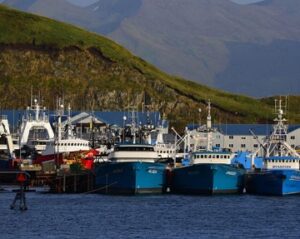
Regardless of party or office, Alaska candidates are targeting trawling
Republicans, Democrats and independents seeking a variety of elected offices across Alaska appear united by a desire to restrict deep-sea trawling. In candidate questionnaires submitted to the Alaska Beacon, candidates for statewide and legislative races, regardless of party, say the restrictions are the best way to improve salmon returns on the Yukon and Kuskokwim rivers. “I support efforts to reduce the wasteful bycatch of Alaska’s seafood by Seattle-based high seas fishing corporations,” said Mary Peltola, the Democratic candidate for Alaska’s U.S. House seat. “Science provides the best guide. However, I think most Alaskans agree it is past time to get high seas trawler bycatch under control,” said Tuckerman Babcock, a Republican candidate for an Alaska Senate district on the Kenai Peninsula. >click to read< 19:46
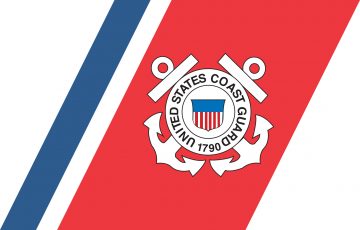
Coast Guard Medevacs injured mariner from vessel in Kukak Bay, Alaska
A Coast Guard aircrew medevaced a mariner on Friday in Kukak Bay, Alaska. A Coast Guard MH-60 Jayhawk helicopter crew from Air Station Kodiak hoisted and transported the injured man from the 30-foot vessel, Wilderness 4, to awaiting Emergency Services Personnel at the air station. Coast Guard Sector Anchorage watchstanders received the initial request for the medevac from a crewmember aboard the vessel at 10:09 a.m., reporting that the master was experiencing potential stroke-like symptoms. Command center personnel directed the launch of the aircrew, who diverted from an agency assist mission to conduct the medevac. The patient was transported from the air station to Providence Kodiak Island Medical Center. -USCG- U.S. Coast Guard 17th District Alaska
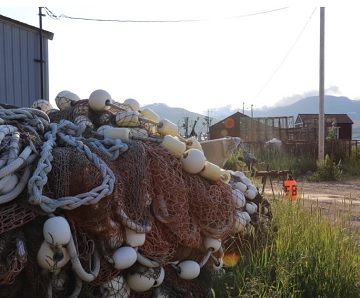
Chignik sockeye runs meet escapement goals for the first time since 2018 crash
The Chignik River has an early and a late sockeye run. The early run’s escapement is now over 420,000, and the late run’s escapement is now over 220,000 as of July 29. It’s the first time the early sockeye run has met its minimum escapement since it collapsed in 2018. The Alaska Board of Fisheries designated the early run as a stock of management concern in March as part of an agreement between the Chignik Intertribal Coalition and the Area M Seiners Association. >click to read< 13:31
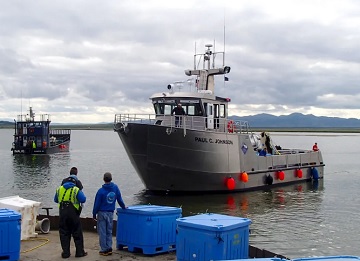
Norton Sound crab fishery bounces back with record year following fishing hiatus
The 2022 commercial crabbing season had the best harvest since 2017, according to the Alaska Department of Fish & Game. And when adjusted for inflation, ADF&G said this season’s ex-vessel value reached levels that haven’t been seen since the late 1970s and early ’80s, when the commercial fishery started in the Norton Sound. One contributing factor was the record price paid by Norton Sound Seafood Products, or NSSP, for red king crab this summer. NSSP paid $12 per pound for regional crabbers, and with a total harvest of 291,553 pounds, this summer season was considered the best crabbing the region has seen in years. >click to read< 14:27
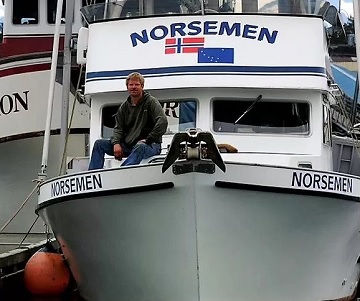
‘Alaskan Bush People’ get the cold shoulder while looking for land in Southeast
Reality TV stars from the long-running Discovery series “Alaskan Bush People” made a brief stop in the Southeast community of Petersburg earlier this month. The famous Brown family tried to buy land after living in Washington the last three years. But locals, including Mark Hofstad, did not welcome them as neighbors. Hofstad said he first noticed a boat belonging to the “Alaskan Bush People” at Petersburg’s South Harbor in early July. The harbor is home to many large commercial fishing boats, including Hofstad’s boat called the Norseman. Hofstad said when he saw staff from the “Alaskan Bush People” walking around, he started bugging the harbor master to move them someplace else. “Just cause I don’t want to look at ‘em,” >click to read< 13:50
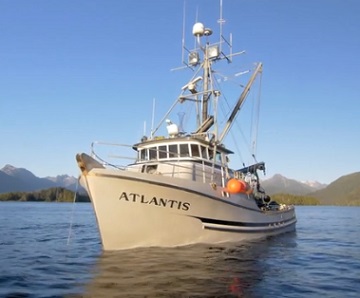
Alaskan Fishing Boat Captain/Pro Skier…McKenna Peterson Is One Badass Woman
Meet McKenna Peterson, Alaskan fishing boat captain and professional skier. Captain McKenna spends her summers at the helm of her family’s fishing boat catching Alaska salmon with her siblings and winters shredding lines that she scopes while she fills up the live wells. Certified badass. Video, >click to watch< 08:35
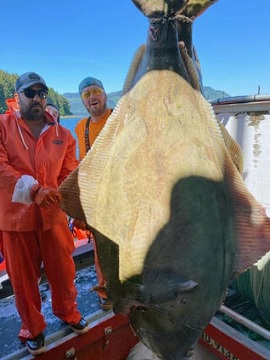
Alaska fishermen haul in monster halibut
Three local commercial fishermen caught what is likely to be the biggest halibut hauled in by a Haines skipper this season, weighing 425 pounds and measuring 91 inches in length. “It was just an epic fish,” said fisherman Cole Thomas, who hooked the fish with his father and captain Bill Thomas and friend Jeff Wackerman. “This one is a lot more special than most.” The three caught the halibut in Icy Strait, near Point Adolphus, with a commercial longline using cod and humpy salmon heads as bait. “I could see the line was going straight down. That means something big’s coming. I was telling my friend (Jeff): It’s going to be a big one, get ready,” Cole Thomas said. >click to continue reading< 14:34

Cook Inlet fishermen sue over set-net closures
Days after they were ordered to take their nets out of the water, Cook Inlet set-netters are suing the state over the fishery’s closure. In a case filed in state court last week, the Cook Inlet Fishermen’s Fund, representing Cook Inlet fishermen, said the state is mismanaging the east-side set-net fishery to the benefit of other user groups. It’s asking the state to immediately reopen the fishery this season to its 440 or so permit-holders, to pay fishermen back for what they lost and to revise the plan that closed it in the first place. Due to restrictions linked to the sport fishery, the east-side set-net fishery in Cook Inlet closes when king salmon abundance on the Kenai River is low. The set-netters were shut down early this year for the fourth year in a row. >click to read< 11:12
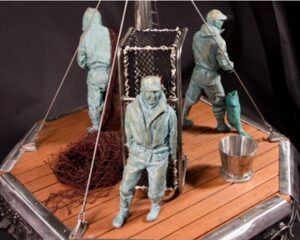
Fishermen’s memorial planned for Unalaska
Across the island plaques and statues commemorate the Aleutians’ World War II history, but there’s nothing to honor the legacy of fishermen lost at sea. Local sculpture artist Karel Machálek wants to change that. He’s currently at work on a life-sized fishermen’s memorial. The piece will include three fishermen cast in bronze, a longliner, crab, and cod fisherman. Karel made a model of the memorial and proposed the project to the City of Unalaska earlier this year. Marie says the proposal was approved, but the location has not yet been confirmed. The current plan is to erect the memorial in the Carl E. Moses Boat Harbor. >click to read< 09:11
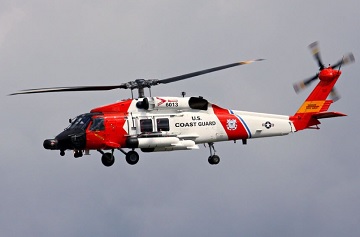
Coast Guard medevacs man from fishing vessel near Cold Bay, Alaska
The Coast Guard medevac’d a 28-year-old man from the fishing vessel F/V Phoenix approximately 160 nautical miles northwest of Cold Bay, Alaska, Sunday. Watchstanders at the 17th Coast Guard District command center received a report at 11:24 p.m. Saturday from the Phoenix crew that a crewmember was suffering severe abdominal pain. A Coast Guard Air Station Kodiak MH-60 Jayhawk helicopter aircrew from forward operating location Cold Bay arrived on scene at 6:13 a.m. Sunday, hoisted the patient, and transported the man to Cold Bay to an awaiting Guardian flight who transported him to Anchorage, Alaska for further medical care. “The aircrews we have deployed to our seasonal forward operating locations help us to respond to these types of cases throughout Alaska,” said Lt. Lindsay Wheeler 17th District command duty officer. 16:23
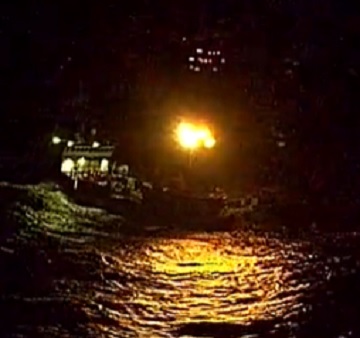
Injured F/V Patricia Lee fisherman medevac’d 200 miles southwest of Dutch Harbor, Alaska
The Coast Guard medevaced a man from a fishing boat Tuesday approximately 200 miles southwest of Dutch Harbor. A Coast Guard MH-60 Jayhawk helicopter crew from Air Station Kodiak hoisted an injured fisherman from the 117-foot, commercial fishing vessel F/V Patricia Lee at about 11:50 p.m. He was flown to Dutch Harbor and placed in the care of LifeMed personnel. Watchstanders in the 17th District command center in Juneau received the initial request for the the medevac from the F/V Patricia Lee at about 4 p.m. Tuesday. The master reported a crew member had sustained serious injuries to his pelvic region after becoming pinned by a crab pot about 225 miles west of Dutch Harbor. >Video, click to read< 15:39
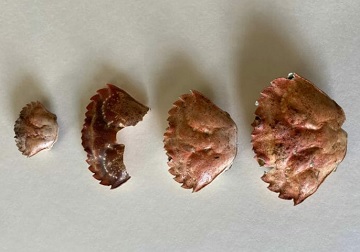
Evidence of invasive green crab that could wreak havoc on Alaska fisheries found near Metlakatla
An invasive species that could wreak havoc on commercial and subsistence fisheries has been found in Alaska for the first time. Biologists with Metlakatla Indian Community say they found the first evidence of European green crabs on Annette Island, near the southern tip of Southeast Alaska, in mid-July. NOAA Fisheries biologist Linda Shaw says they’re a particular threat to fellow shellfish. “They compete with juvenile Dungeness crab. They are shellfish predators, so things like clams, they would directly eat,” she said. “And then there’s also anecdotal information from British Columbia that they predate on juvenile salmon.” >click to read< 11:49
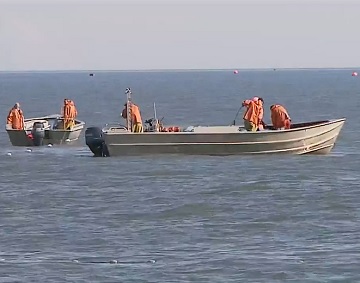
Fish and Game closes part of the Upper Cook Inlet to gillnet fishing
The Alaska Department of Fish and Game closed all set gillnet fishing in the Kenai, Kasilof, and East Forelands sections of Upper Cook Inlet after low counts of large king salmon passages. This is the third year in a row that the department has closed this fishery, with Ken Coleman saying it’s becoming a strain on some of those who set gillnets for a living. “We watch the fish jump by, watch everybody else having a good time doing what they do and we’re all losing money,” Coleman said. This closure impacts businesses collectively as it’s a chain reaction effect across the area. Video, >click to read< 15:07
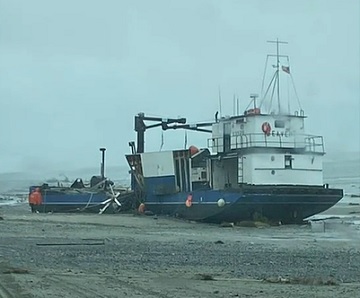
Vessel runs aground near Naknek, prompts temporary fishing closure
After a fishing vessel washed up on shore in the Bristol Bay area near Naknek and leaked diesel fuel, the Alaska Department of Fish and Game temporarily closed commercial salmon fishing. The closure went into effect at 6 p.m. Monday and has since been rescinded. According to the Alaska Department of Fish and Game in King Salmon, there is a salvage crew working on the fishing tender on Naknek Beach south of Pederson Point Cannery. ADFG announced that they have removed major sources of pollutants, but a small residual sheen has been left behind. Video, >click to read< 09:24
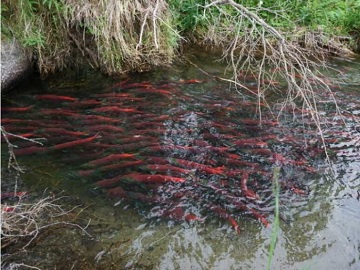
Bristol Bay’s sockeye run is already the biggest on record
Bristol Bay’s 2022 sockeye run is now the biggest on record: 69.7 million fish have returned this summer. That surpasses the previous record of 67.7 million fish, which was set last year. Bristol Bay’s commercial fleet hauled in the most fish on record this year. More than 3 million sockeye have swum up the Wood River to spawn in the tributaries around Lake Aleknagik, about 20 miles from Dillingham, according to the state’s counting tower on the river. Sherol Mershon lives along the lake near the head of the river. She owns a bed and breakfast there and has hung commercial fishing nets for 45 years. She said this year’s runs are remarkable. >click to read< 12:10
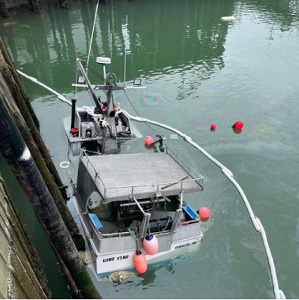
F/V Lone Star sinks at Fisherman’s Terminal on Tuesday morning
According to Harbormaster Matt Creswell, the fishing boat Lone Star was reported to be sinking at around 5 a.m. “We received a report that there was a vessel sunk at the crane dock between Aurora and Harris harbors, we refer to it as Fisherman’s Terminal,” Creswell said. “Harbor staff responded before 6 a.m. and found the large fishing vessel, a little over 40 feet I believe, named the Lone Star, was completely sunk in the crane docks.” >click to read<
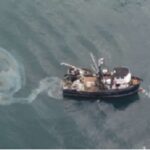 USCG seeks information on vessel leaking oily substance into Alaskan waters – The USCG is seeking info about a vessel photographed July 14, at approximately 4 p.m., in northeastern vicinity of Valdez Narrows. The position on that date is indicated by encircled yellow triangle on the chart below. Photos, >click to read< 10:50
USCG seeks information on vessel leaking oily substance into Alaskan waters – The USCG is seeking info about a vessel photographed July 14, at approximately 4 p.m., in northeastern vicinity of Valdez Narrows. The position on that date is indicated by encircled yellow triangle on the chart below. Photos, >click to read< 10:50
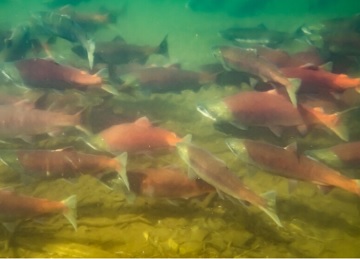
Bristol Bay Fisheries Report: July 17, 2022
Harvests slowed down Saturday. The bay-wide haul was 851,000. This year’s all-time biggest harvest now totals 55.6 million fish. But escapement is still below the record. 17 million fish have made it to spawning grounds across the bay – short of last year’s bay-wide escapement of 25.6 million. Still, the runs up a few rivers have exceeded their maximum escapement goals, and many others have met escapement. >click to read< 12:10
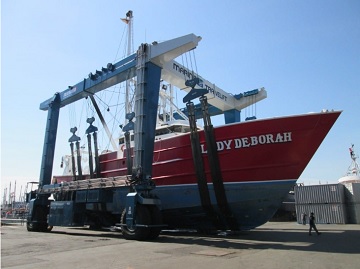
Industrial park board backs proposal for spending Sitka hospital sale proceeds on marine haulout
The board of directors of Sitka’s Industrial Park has lent its unanimous support to a proposal to use proceeds from the sale of Sitka Community Hospital to construct a marine haul out. Directors of the Gary Paxton Industrial Park debated the issue for a half-hour at their monthly meeting on Monday (7-11-22), addressing many questions that are likely to be raised by the public if the question moves to the ballot this fall. Municipal administrator John Leach said the possibilities of growth were significant for hauling larger ships, possibly even Coast Guard Fast Response Cutters, which currently are serviced in Homer and in California. The idea was, “if we build it, they will come.” >click to read< 20:38
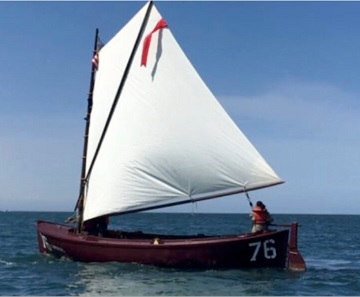
Historic Sailboat begins voyage to Naknek
For more than 60 years, sailboats dominated Bristol Bay’s commercial fishery. Motorized vessels were illegal. Then, in 1951, the federal government finally allowed motorized fishing vessels in Bristol Bay. LaRece Egli, the director of the Bristol Bay Historical Society Museum in Naknek said almost immediately, sailing was made obsolete for the fishery. “I think it’s literally down to 50 or 46 boats or something like that in 1954 and then they just disappear,” she said. By 1952, powerboats outnumbered sailboats 4 to 1. In less than five years, every commercial vessel had a motor. This year, local historians are bringing the sailing tradition back to the bay with a vessel named the Libby, McNeil, Libby, No. 76. >click to read< 10:39






